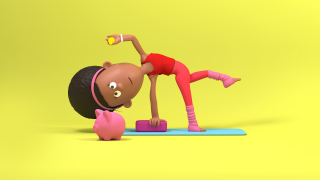
Last month I attended my fifth conference course in a quest to obtain my UX certification with NN/g. This time I chose to study Mobile User Experience for mobile apps and mobile websites.
The course was led by Tanner Kohler, an NN/g User Experience Specialist. I was in attendance with international delegates representing organisations such as Google, Adobe, eBay, The FA, Virgin and Caterpillar. Along with a mix of industries from car manufacturers to airlines, universities to governments, finance companies to FMCG businesses and many more.
Set across two days, this course was made up of lectures based on research-led best practice for user experience, explaining what bad user experience looks like and group activity sessions to put into practice what we had been learning.
As someone who has been working in website design for many years now, I understand the importance of good user experience and I never tire of listening to new ideas and research on the topic. The online and digital world moves at such a pace that you cannot afford to stop learning. Especially when it comes to mobile devices and app development. So, this course was a particularly interesting one to me.
Most of my previous learning has been thinking on a broader scale of user experience. Things like the psychology and emotions attached to users completing many kinds of tasks and navigational tools to help improve multiple journeys. This course was much more focused on tools and techniques to create better mobile experiences.
Without wanting to give away any plot spoilers from the course, I’ll share with you some of my key takeaways from the sessions:
Mobile browsing has several constraints that do not affect desktop browsing.
It is important to consider how to combat them. Like small screen size that restricts content. It’s portable, therefore interruptible. Mobile browsing relies on data, connectivity and all the other things related to how quickly something loads. Inaccurate navigation tools (aka fingers). And a minefield of notifications that distract the user from the task in hand.
The web is for new users.
New users will browse a website for information, they will download an app to complete tasks – sometimes once, sometimes repeatedly, sometimes offline. Use the right tool for the right use case.
Users tend to perform complex tasks on desktop and simple tasks on mobile.
Make your website as simple to use and as easy to understand as possible on mobile devices.
Different operating systems bring with them their own trials and challenges.
Does the website inherit the browser UI? Are you considering this in your app design and development? Test and test again.
A lack of hover effects and animation limitations can leave users with no visual indicator to reflect an action.
Guide the user on what they need to do next to complete a task or make a conversion.
Use the features on the device to help the user complete tasks more efficiently.
Make use of cameras, GPS and payment options etc.
Designing tables for both desktop and mobile will always be a nightmare.
Enough said.
I’m pleased to report that I passed my exam with flying colours and I’m now UX Certified for Interaction Design with NN/g – I have a fancy badge on my LinkedIn profile and everything.
This is all thanks to Fluid’s very generous personal development budget that each member of the team is entitled to use every year. Another fantastic benefit to allow us to be ambitious in our careers and better support our clients.







